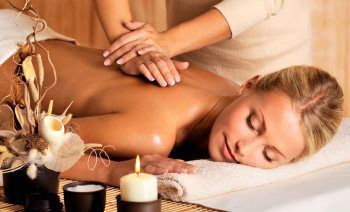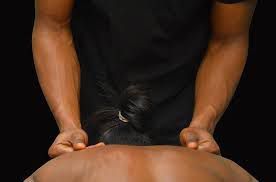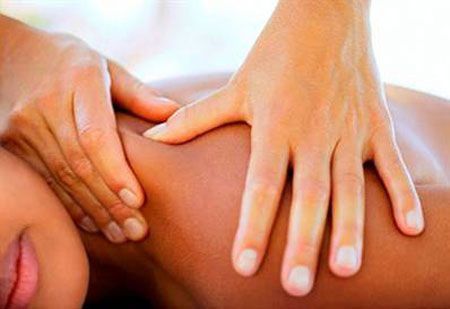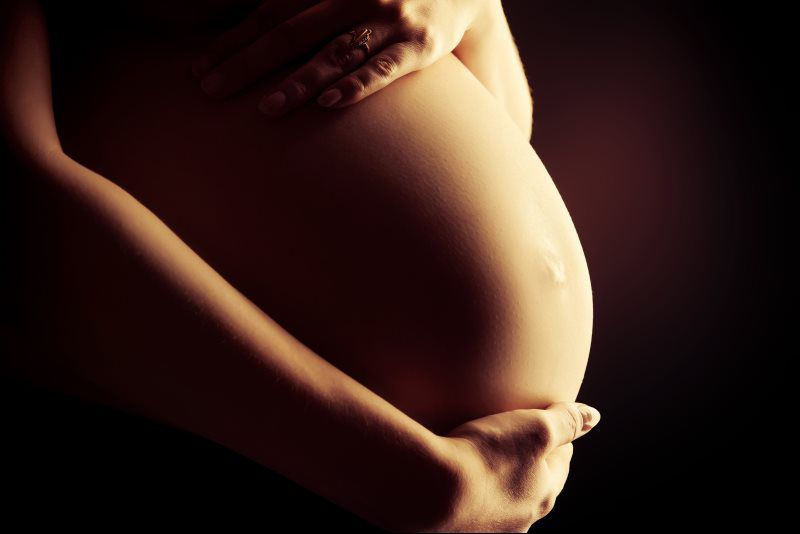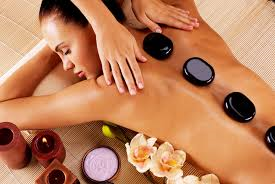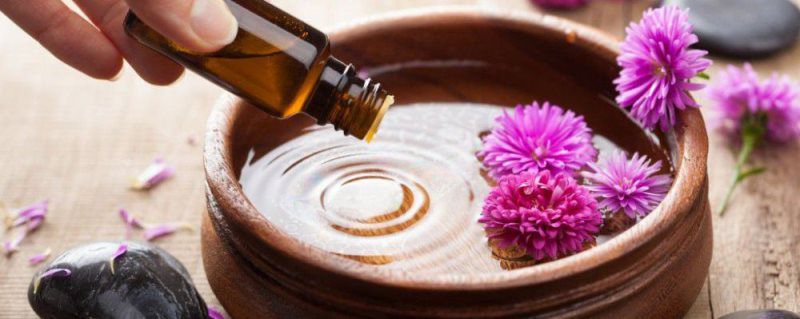Massage is a technique that just plain feels good! But it can also be a powerful tool to help you take charge of your health and well-being.
By: Mayo Clinic Staff
What is Massage?
Massage is a general term for pressing, rubbing and manipulating your skin, muscles, tendons and ligaments. It can range from light stroking to very deep pressure.
Massage is generally considered part of alternative medicine. It’s increasingly being offered along with standard treatment for a wide range of medical conditions and situations.
While more research is needed to confirm the benefits of massage, some studies have found that massage may also be helpful for:
Anxiety
Digestive disorders
Fibromyalgia
Headaches
Insomnia related to stress
Myofascial pain syndrome
Soft tissue strains or injuries
Sports injuries
Temporomandibular joint pain
Beyond the benefits for specific conditions or diseases, some people enjoy massage because it often produces feelings of caring, comfort and connection.
Despite its benefits, massage isn’t meant as a replacement for regular medical care. Let your doctor know that you’re trying massage and be sure to follow any standard treatment plans you have.
Risks of Massage
Most people can benefit from massage. However, massage may not be appropriate if you have:
Bleeding disorders or take blood-thinning medication
Burns or healing wounds
Deep vein thrombosis
Fractures
Severe osteoporosis
Severe thrombocytopenia
Discuss the pros and cons of massage with your doctor, especially if you are pregnant or you have cancer or unexplained pain.
Some forms of massage can leave you feeling a bit sore the next day. But massage shouldn’t ordinarily be painful or uncomfortable. Most serious problems come from too much pressure during massage. If any part of your massage doesn’t feel right or is painful, speak up/tell your therapist right away.
SWEDISH MASSAGE
This is what most of us think about when we hear the word “massage.” It is performed by a trained and licensed massage therapist who lubricates the bare skin with massage oil and uses gliding and other movements to massage the whole body. Swedish massage is the most commonly requested type of massage at spas today.
The purpose of Swedish massage is to relax the entire body, but it also has a number of other health benefits. Swedish massage improves blood circulation, increases the level of oxygen in the blood, helps the body remove toxins, improves flexibility, eases tension and helps with pain management. This is accomplished by using a variety of techniques, primarily rubbing the muscles with long gliding strokes in the direction of blood returning to the heart.
Other techniques the therapist can use include kneading a muscle, cross-fiber friction to break up muscle knots (adhesions), percussion-like tapping, shaking motions, and stretching.
Swedish massage was first developed in the 1820s by Dr. Per Henrik Ling, a physiologist and fencing master. In the early 19th century he developed a system called “Medical Gymnastics” – borrowed technique from China, Egypt, Greece, and Rome. These became the known as “Swedish movements” in Europe and “the Swedish Movement Cure” when they came to the U.S. in 1858. Today it is simply known as Swedish massage, the most popular Western massage.
DEEP TISSUE
Deep tissue massage is a type of massage aimed at the deeper tissue structures of the muscle and fascia, also called connective tissue. Deep tissue massage uses many of the same movements and techniques as Swedish massage, but the pressure will generally be more intense. It is also a more focused type of massage, as the therapist works to release chronic muscle tension or knots (also known as “adhesions.”)
It shouldn’t hurt, but it’s likely to be a bit more uncomfortable than a classic Swedish massage. You should always feel free to speak up if the pressure is too much for you.
It’s important to drink a lot of water after a deep tissue massage to help flush lactic acid out of the tissues. If you don’t, you might be sore the next day.
It’s possible that you might feel some soreness the day after a deep tissue massage even if you DO drink water. This just means a lot of waste products were flushed out of the tissues. It should pass within a day or so.
It’s important to be realistic about what one deep tissue massage can achieve. Many people ask for more pressure, thinking that if the therapist just pushes hard enough, they can get rid of all their knots in an hour. This just won’t happen.
In fact, undoing chronic knots and tension built up over a lifetime is best achieved with an integrated program that includes exercise, work on your posture and ways of moving, relaxation techniques and a regular program of massage.
TRIGGER POINT MASSAGE
A trigger point is a localized “knot” or spasm, when compressed, is tender. It affects not only the muscle where the trigger point is located, but also causes “referred pain” in tissues supplied by nerves.
Trigger points are located in a taut band of muscles fibers. The trigger point is the most tender point in the band. The therapist will locate and deactivate them using finger pressure. The main technique to treat them is to pick up the muscle fibers in a pincer grip and hold until the pain gradually dissipates. It is used to treat painful trigger points that cause referred pain. It took a while to get the muscle in that condition, and it will likely take more than one massage to get rid of it.
These points are often areas of chronic “holding” and you need to learn how to move in different ways to keep them from recurring. It will probably be uncomfortable.
PRENATAL MASSAGE
Also known as pregnancy massage, this technique promotes relaxation, soothes nerves, and relieves strained back and leg muscles in expectant mothers. Prenatal massage is especially beneficial in the second and third trimesters, when the extra weight in your belly puts a strain on your back. Our trained therapists know about the physiology of pregnant women. They know the special positions pregnant women require at different stages of their pregnancy, and how to give the body extra cushioning and support. Particularly important is knowing the pressure points that must be avoided during pregnancy.
A prenatal massage differs from traditional massage in a few different ways. If you’re lying on your back, there will be pillows underneath your knees and shoulders. If you’re far along in your pregnancy, you might be positioned in a semi-reclining position, where you’re looking at the wall instead of the ceiling.
HOT STONE MASSAGE
Hot Stone Massage is a specialty massage where the therapist uses smooth, heated stones as an extension of their own hands, or by placing them on the body. The heat can be both deeply relaxing and can help warm tight muscles so the therapist can work more deeply, more quickly. However, since your muscles have already been relaxed and warmed by your hydrotherapy hot tub session, our hot stones will only be trickled into your massage.
The Origins of Hot Stone Massage
Hot stones warmed by fire were used by Native Americans to treat aching muscles, but the modern revival of hot stones in massage is generally credited to Mary Nelson, a native of Tucson, Arizona. She trademarked her style of hot stone massage, called LaStone Therapy, which has a Native American spiritual component and requires training and certification.
A hot stone massage takes a lot of skill and sensitivity on the part of the therapist. Our therapists have made a serious investment in training.
AROMATHERAPY
Aromatherapy is the practice of using the natural oils extracted from flowers, bark, stems, leaves, roots or other parts of a plant to enhance psychological and physical well-being.
The inhaled aroma from these “essential” oils is widely believed to stimulate brain function. Essential oils can also be absorbed through the skin, where they travel through the bloodstream and can promote whole-body healing.
A form of alternative medicine, aromatherapy is gaining momentum. It is used for a variety of applications, including pain relief, mood enhancement and increased cognitive function.
There are a wide number of essential oils available, each with its own healing properties.
We sprinkle aromatherapy into each of our massage sessions at no additional cost to our clients.



